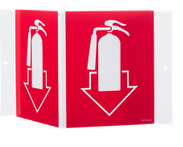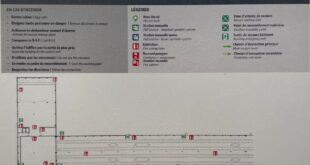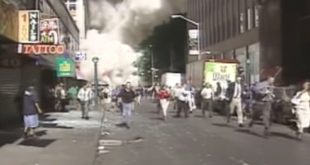An on-site emergency plan is a set of actions that the members of any organization must take in an emergency.
It must be an integral part of the security program in all organizations. By technical and organizational measures, it ensures effective management of an accident, and it minimizes the losses to the people and property.
In this article I am going to outline the main points that any institution should include in its emergency plan.
Let’s start by outlining some guidelines for everyone to follow in an emergency 😉
Essential guidelines
- Call 911 and when calling :
- Be calme
- Expect to give the exact address and the exact location of the victim or the incident.
- Fire alarm pull stations are located by exits, stairwells. think to activate them to inform other occupants.
- Audible alarms require immediate evacuation of the building to the designated meeting area to be counted.
- Become familiar with stairwells location and emergency exits.
- Emergency exits must be indicated on corridors and exit stairwells.
- Become familiar with the fire extinguishers positions.
- Fire extinguishers are located in several places in the building. Often indicated at the top by a sign.

- Do not use elevators during an evacuation.
- When it requires an evacuation:
- Do not delay. Keep quiet Listen to emergency notifications and follow instructions.
- Do not use elevators.
- Do not run unless it is necessary. Because, It this could lead to panic and possible injuries
- Go to the assembly area to be counted.
Now that we have listed the behaviors and reflexes that everyone must have in the event of an emergency, let’s talk about the actions to take depending on the case 🙂
Actions to take regarding emergency events
Fire
- trigger a fire pull stations located near exits.
- If the fire is small. If you are trained to extinguishers, try to extinguish it using extinguishers located throughout the building.
- avoid the smoke by keeping yourself low. Crawl out if necessary. Because smoke goes up, oxygen goes down.
Weather emergencies (storm, tornado)
- Stay indoors, and away from windows and glass doors.
- If there is a tornado, lie on the floor under a table or other sturdy object.
- Take refuge in small interior room, closet, or hallway on the lowest floor.
earthquake
- stay under heavy furniture.
- Hold onto the object you are under.
- Cover your head and your torso.
If you are outdoor
- Stay outside, in an open area away from buildings.
- If you are in a car, stop and don’t block road.
- Avoid bridges, overpasses underpasses or anything that could collapse.
Flooding
- Move to higher ground quickly.
- Be cautious of live wire., Turn off your electrical equipment.
General Power cut off
- Stay when your are until the emergency lights turn on.
- If an evacuation is necessary, do it in group.
- If possible, unplug equipment to prevent potential dam from the power surge.
Suspicious package
- Do not touch it
- Don’t use your electronic devices
- Have every one leave the area
- Evacuate the building
- Call 911
Gaz leak
- No smoking
- No electrical equipment nor cell phones
- Call 911
Every organization should produce an on-site emergency plan as a document and make it available to all its members.
You may be interested in our articles :
Get a look at the US and canadian governments emergency guides


